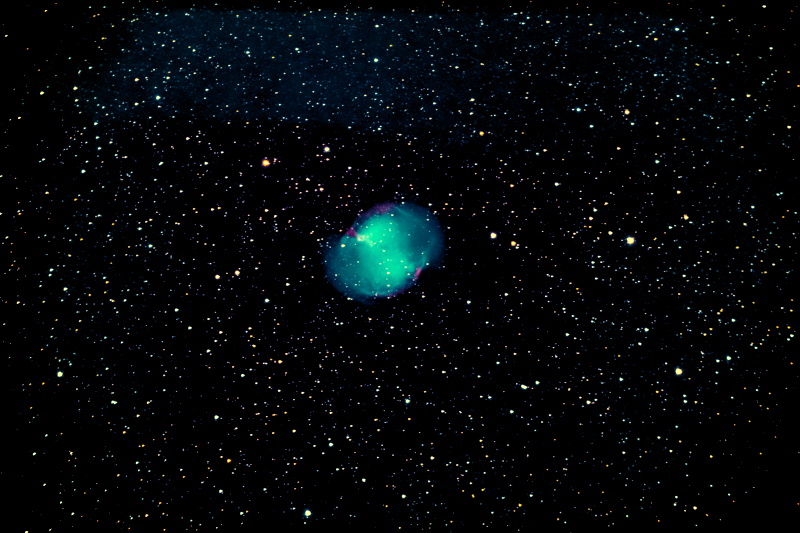UHC Filter Imaging Tests
Posted: 4 September 2020
|
Open: Thursday, 3 September 2020, 1816 MST Temperature: 91°F |
Session: 1513 Conditions: Clear |
Equipment:
12" f/8 LX600 w/StarLock
2" 24mm UWA eyepiece
2" 9mm 100° eyepiece
Filter Slider System
2" UHC Filter
Camera:
D850 DSLR
1829 MST: dome OFF.
1830 MST: began relaxing on the observatory patio bench.
1847 MST: sunset.
1900 MST: back inside the observatory. Prepared the D850 DSLR for imaging.
1912 MST: LX600 ON, StarLock OFF, High Precision OFF.
Viewed Jupiter and 4 moons, 102X and 271X. Then viewed Saturn, 271X. Seeing was not good.
I then did some visual tests using the Astrozap Astrocap Bahtinov Mask in its "collimation" mode. The three holes were used to "stop down" the 12" f/8 optics to increase contrast and reduce the bright glare from the planets. I was curious as to how well this would work. Jupiter, 271X, was less glaringly bright with a little more contrast when using the Mask. The most dramatic improvement was the visibility of the disks of the four Galilean Moons. Saturn, 271X, was dimmer but the increased contrast brought out the Cassini Division better. I will do some imaging tests on a future session.
1930 MST: slewed to M8 (Lagoon Nebula), which would be my first UHC test imaging target. I then relaxed some more on the bench to watch the stars come out.
1945 MST: back in the observatory. Viewed M8, 102X.
Slewed the 12" telescope to the star Antares, mounted the D850 DSLR at prime focus using the Starizona Filter Slider System, focused on Antares using the Meade Bahtinov Mask, and locked the 12" mirror using the ScopeStuff LX600 12" Primary Mirror Lock.
1956 MST: StarLock ON.
2004 MST: the eastern sky was brightening from the rising waning gibbous Moon.
I imaged five nebulae with and without the Explore Scientific 2" UHC Filter. Here are the unfiltered images (StarLock autoguided, 3 minutes, ISO 6400, White Balance 5560K). I will post the filtered images on my upcoming review.
M8 (Lagoon Nebula)

M17 (Swan Nebula)

M20 (Trifid Nebula)

M57 (Ring Nebula)

M27 (Dumbbell Nebula)

The brightening moonlit sky hampered the imaging, which was good for the filter tests.
2101 MST: the waning gibbous Moon began rising over the hill.
2109 MST: StarLock OFF.
Ended tests.
2119 MST: viewed M27 (Dumbbell Nebula), 102X.
2120 MST: LX600 OFF.
2130 MST: dome ON.
2136 MST: took this handheld photo of the Moon (f/5.6, 1/1000sec, ISO 400, White Balance Auto, FL 300mm, cropped).

|
Close: Thursday, 3 September 2020, 2137 MST Temperature: 77°F |
Session Length: 3h 21m Conditions: Clear |
Comments are welcome using Email. Twitter users can use the button below to tweet this report to their followers. Thanks.
Cassiopeia Observatory Home Page
Copyright ©2020 Michael L. Weasner / mweasner@me.com
URL = http://www.weasner.com/co/Reports/2020/09/04/index.html
